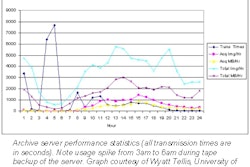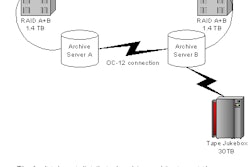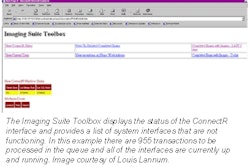Distributing medical images throughout a healthcare enterprise is one of the key benefits of PACS. German firm RADIN (Radiology in Internet and Intranet) is banking on that benefit, with a Web-based approach to image distribution that it hopes will win a secure niche in the market.
The key element of the vendor's strategy is the RADIN server, which receives pre-selected DICOM images from the imaging modality and makes them available for immediate download by physicians, said Horst Trautnitz, medical devices product manager for the company, which is based in Fuerth. By holding all of the short-term images, the server also acts as a buffer to reduce access demands on the PACS archive and shorten image retrieval time, he said.
Physicians can access the server using their Web browsers from standard PCs. The user interface can also be customized because it's based on Microsoft's ActiveX programming language, Trautnitz said.
"For the client machines, you do not have to install a separate Windows program," he said. "You just point your browser to the RADIN server."
Access control is handled through passwords as well as user groups and levels, which define the type of information each physician can view. RADIN can serve as the Web image distribution component to an existing PACS, or can even function as a small-scale PACS on its own, Trautnitz said.
"It's not a long-term archive, but it can provide intermediate storage of images," he said.
RADIN is targeting two primary customer groups for its software: Large hospitals that want to distribute images to the clinical departments, but that don't want to install viewing software at each PC; and private-practice radiologists seeking to distribute images to their referring physicians.
At the Symposium for Computer Applications in Radiology (SCAR) earlier this month, RADIN added new functionality to the software, including the addition of wavelet compression. With wavelet compression, users can view the lossy image, and if necessary, access the original study if more information is desired.
RADIN has also added a measurement function, which complements its original window/leveling, zooming, and panning capabilities. Support for multiframe cardiology images is now included as well. RADIN has also improved the speed of its data encryption, which has been upgraded to 128-bit secure socket layer (SSL).
In other enhancements, RADIN has added an interface to HIS and RIS systems, allowing users of those systems to quickly bring up images along with patient information and radiology reports, Trautnitz said.
RADIN sells its software through distributors and through OEM channels. Canadian PACS vendor RamSoft distributes the technology worldwide, while Integrated Modular Systems of Havertown, PA, also markets the software in the U.S. OEMs in RADIN's stable include Ferrania Imaging Technologies and Rogan Medical Systems.
Since shipments began in early 2000, RADIN's software has been installed at more than 125 sites around the world, Trautnitz said. RADIN is a subsidiary of German software and hardware company SoHard, which, in addition to developing the RADIN software, also provides software development services to several medical imaging OEMs, such as Siemens Medical Solutions.
By Erik L. Ridley
AuntMinnie.com staff writer
May 16, 2001
Click here to post your comments about this story in our PACS Digital Community. Please include the headline of the article in your message.
Copyright © 2001 AuntMinnie.com



















